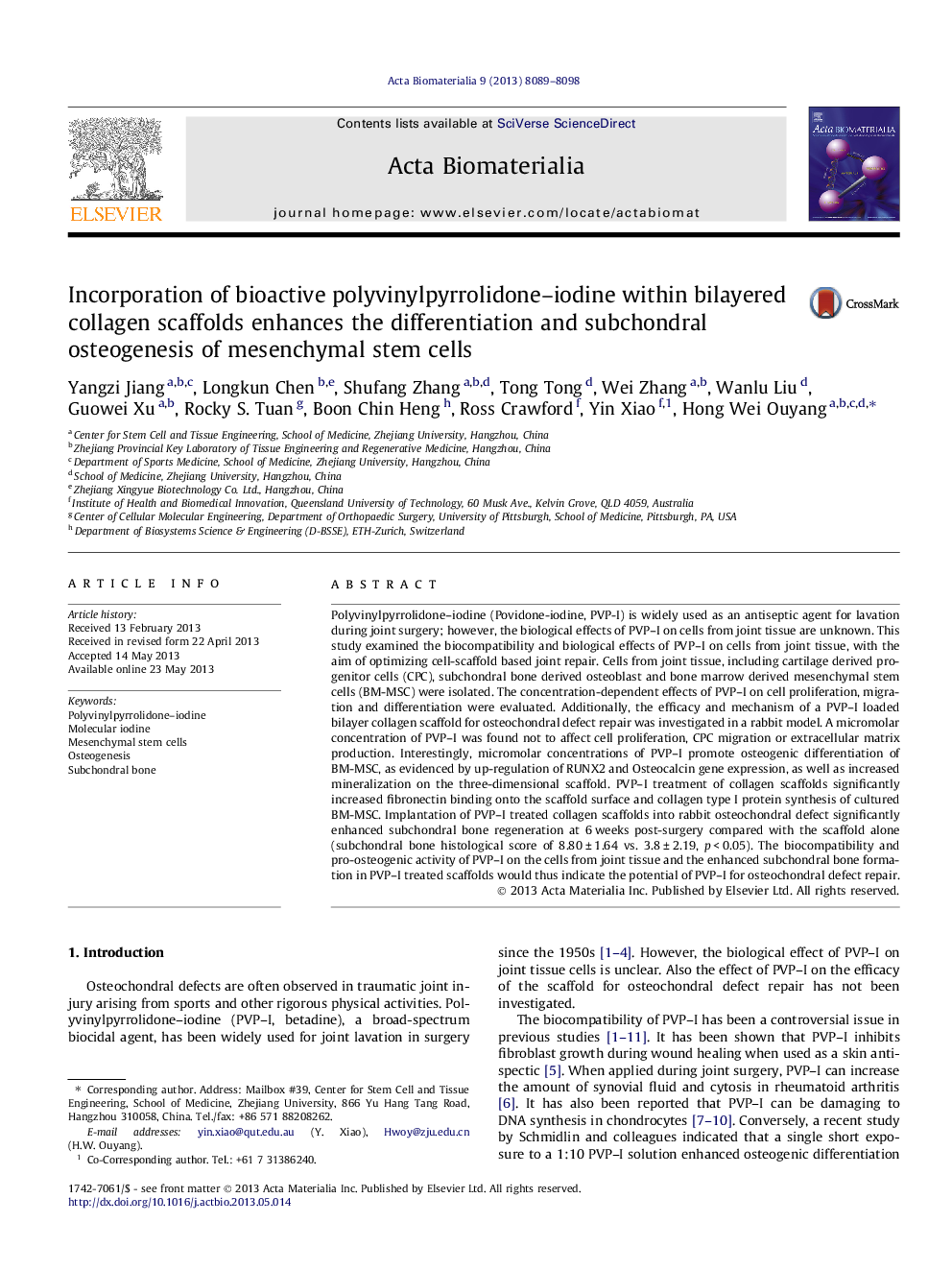| Article ID | Journal | Published Year | Pages | File Type |
|---|---|---|---|---|
| 10159769 | Acta Biomaterialia | 2013 | 10 Pages |
Abstract
Polyvinylpyrrolidone-iodine (Povidone-iodine, PVP-I) is widely used as an antiseptic agent for lavation during joint surgery; however, the biological effects of PVP-I on cells from joint tissue are unknown. This study examined the biocompatibility and biological effects of PVP-I on cells from joint tissue, with the aim of optimizing cell-scaffold based joint repair. Cells from joint tissue, including cartilage derived progenitor cells (CPC), subchondral bone derived osteoblast and bone marrow derived mesenchymal stem cells (BM-MSC) were isolated. The concentration-dependent effects of PVP-I on cell proliferation, migration and differentiation were evaluated. Additionally, the efficacy and mechanism of a PVP-I loaded bilayer collagen scaffold for osteochondral defect repair was investigated in a rabbit model. A micromolar concentration of PVP-I was found not to affect cell proliferation, CPC migration or extracellular matrix production. Interestingly, micromolar concentrations of PVP-I promote osteogenic differentiation of BM-MSC, as evidenced by up-regulation of RUNX2 and Osteocalcin gene expression, as well as increased mineralization on the three-dimensional scaffold. PVP-I treatment of collagen scaffolds significantly increased fibronectin binding onto the scaffold surface and collagen type I protein synthesis of cultured BM-MSC. Implantation of PVP-I treated collagen scaffolds into rabbit osteochondral defect significantly enhanced subchondral bone regeneration at 6 weeks post-surgery compared with the scaffold alone (subchondral bone histological score of 8.80 ± 1.64 vs. 3.8 ± 2.19, p < 0.05). The biocompatibility and pro-osteogenic activity of PVP-I on the cells from joint tissue and the enhanced subchondral bone formation in PVP-I treated scaffolds would thus indicate the potential of PVP-I for osteochondral defect repair.
Related Topics
Physical Sciences and Engineering
Chemical Engineering
Bioengineering
Authors
Yangzi Jiang, Longkun Chen, Shufang Zhang, Tong Tong, Wei Zhang, Wanlu Liu, Guowei Xu, Rocky S. Tuan, Boon Chin Heng, Ross Crawford, Yin Xiao, Hong Wei Ouyang,
